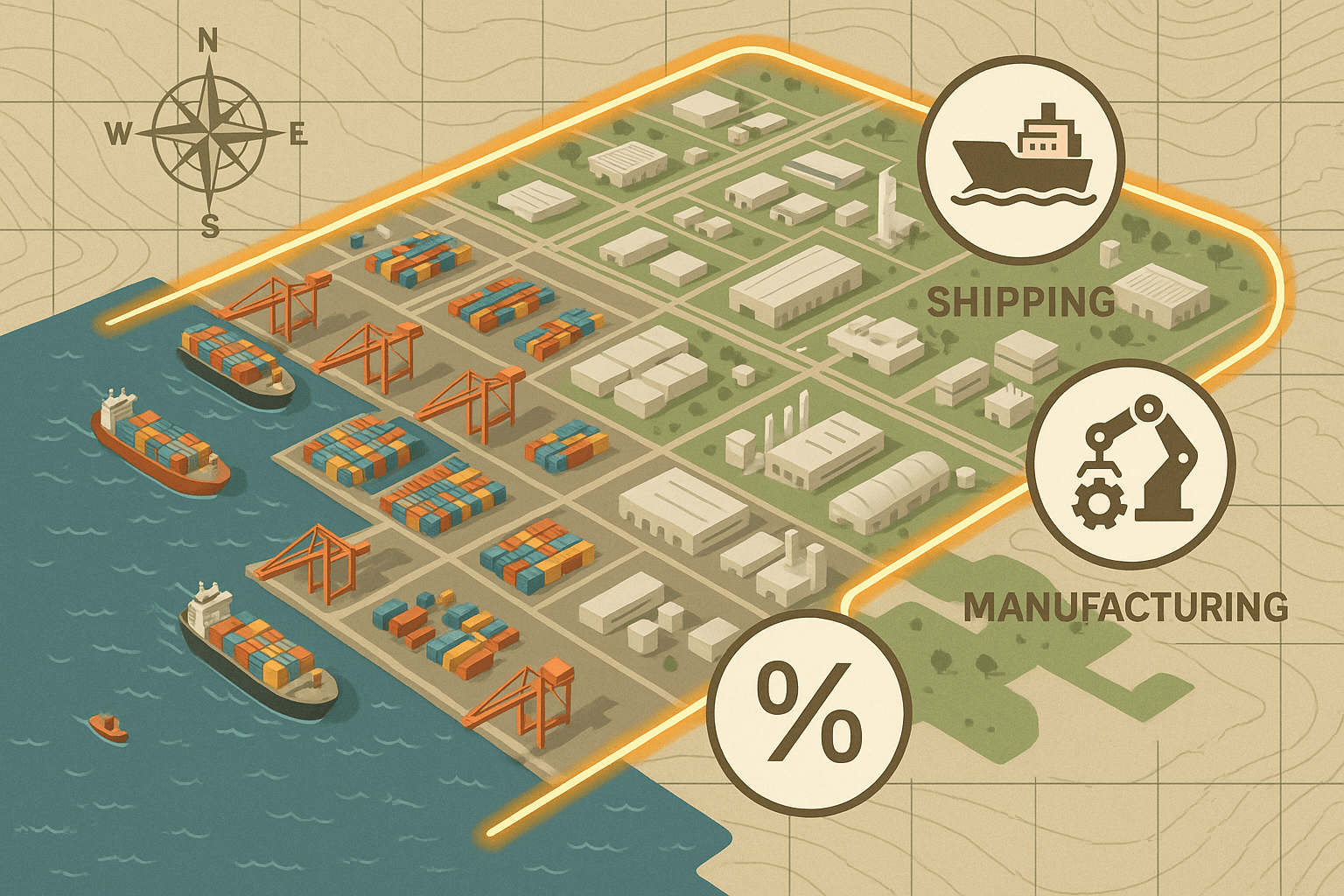What Exactly is a Special Economic Zone?
At its core, a Special Economic Zone is a geographically delimited area within a country where the legal and economic framework is designed to be more attractive to foreign and domestic investment than the rest of the country. Think of it as a special economic bubble. The goal is to stimulate economic growth, boost exports, and create jobs by offering a highly favorable business environment.
While the specifics vary, most SEZs share a common DNA:
- Tax Incentives: Substantially lower corporate taxes, or even tax holidays for a number of years.
- Duty-Free Operations: Exemption from customs duties on imported raw materials and exported finished goods.
- Streamlined Bureaucracy: “One-stop-shop” administrative services to simplify permits, licenses, and legal procedures.
- Infrastructure Support: High-quality, government-supported infrastructure, including reliable power, modern ports, roads, and telecommunications.
But the most crucial element, the one that underpins all others, is location. The success or failure of an SEZ is inextricably linked to its geography.
The Geography of SEZs: Where Location is Everything
SEZs are not placed randomly on a map. Their positioning is a calculated decision based on physical and human geography, designed to maximize their connection to the global circulatory system of trade.
Physical Geography: Coasts, Ports, and Plains
Take a look at a world map of major SEZs, and a pattern immediately emerges: they hug the coastlines. This is no coincidence. Proximity to the sea provides direct access to the planet’s primary trade arteries—global shipping lanes. A coastal location dramatically reduces the time and cost of moving raw materials in and finished products out.
The Jebel Ali Free Zone (JAFZA) in Dubai is a perfect example. It was built around the world’s largest man-made harbor, strategically positioned at the crossroads of trade routes connecting Europe, Asia, and Africa. Its geographical placement is its greatest asset, making it a lynchpin of global logistics.
Beyond the coast, the availability of flat, undeveloped land is also a key geographical factor, allowing for the construction of vast, purpose-built industrial parks and manufacturing facilities without the constraints of existing urban landscapes.
Human Geography: Labor, Borders, and Connectivity
SEZs are also positioned to tap into critical elements of human geography. They are typically established near large urban centers to ensure access to a deep and diverse labor pool, from factory workers to skilled engineers and managers.
Furthermore, their location is often determined by political geography. Consider the “maquiladoras” of Mexico. These are manufacturing plants, effectively a type of SEZ, clustered along the U.S.-Mexico border. Their geography is their business model: they import raw materials and components duty-free from the U.S., assemble them using more affordable Mexican labor, and export the finished goods straight back across the border. This unique cross-border geography created a powerful symbiotic economic region.
A Journey Through Global SEZs: Three Case Studies
The Pioneer: Shannon, Ireland
The story of the modern SEZ begins in an unlikely place: the west coast of Ireland. In 1959, the Shannon Free Zone was established next to Shannon Airport. At the time, the airport was a crucial refueling stop for transatlantic flights. To capitalize on this flow of traffic and combat local unemployment, the Irish government created the world’s first industrial free trade zone. It was a masterstroke of leveraging a specific geographical advantage—an airport hub—to create an economic oasis that became the blueprint for thousands of zones to follow.
The Game-Changer: Shenzhen, China
No story about SEZs is complete without Shenzhen. In 1980, it was a sleepy collection of fishing villages with a population of about 30,000. Its key geographical feature was its location: a mere stone’s throw across the border from the thriving capitalist hub of Hong Kong.
The Chinese government designated Shenzhen as one of its first SEZs, a controlled laboratory for market-based economic reforms. Foreign investment, technology, and business practices flooded in from Hong Kong. The result was a geographical and economic explosion. Today, Shenzhen is a gleaming megacity of over 17 million people, a global hub for technology and manufacturing, and a testament to how a strategically placed SEZ can transform a landscape and a nation’s economy.
The Logistics Hub: Dubai, UAE
Dubai’s Jebel Ali Free Zone (JAFZA), established in 1985, represents the modern evolution of the SEZ. It wasn’t designed just for manufacturing but as a comprehensive logistics and trade ecosystem. Its geography is its power. Situated on the Persian Gulf, it connects East and West, providing unparalleled access to a market of billions. JAFZA, combined with its world-class port and airport, allowed Dubai to successfully diversify its economy away from oil and transform itself into a premier global center for business, finance, and logistics.
Reshaping the Earth’s Surface
The impact of SEZs extends far beyond balance sheets. They are powerful forces that reshape the physical and human landscape.
They trigger rapid urbanization, turning rural backwaters into sprawling industrial cities. They necessitate the creation of massive infrastructure projects—new ports, highways, and railways—that alter coastlines and carve corridors through the land. However, this rapid development is not without its challenges. SEZs can sometimes create “islands of prosperity” that highlight regional inequality, and the intense industrial activity can raise significant environmental and labor concerns.
Ultimately, Special Economic Zones are one of the clearest examples of how humans intentionally manipulate geography for economic gain. They are carefully chosen pieces of land, set apart by law and connected by sea and air to the rest of the world. These global trade islands are more than just policy tools; they are powerful geographical phenomena that continue to define the flow of capital, goods, and people across our planet.
